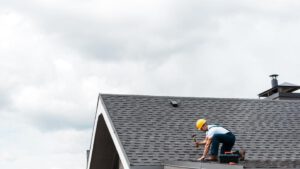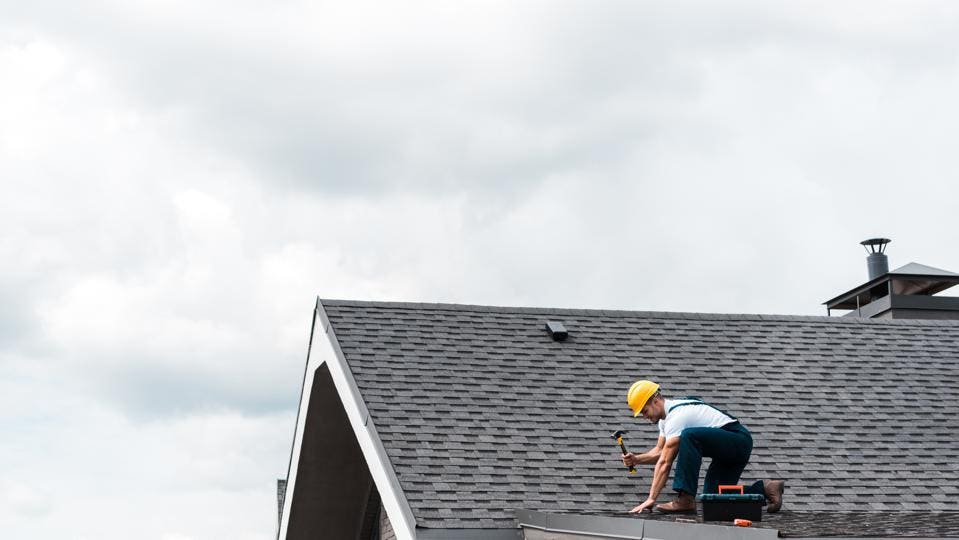A new roof can boost your home’s value and prevent problems like mildew growth, wood rot, and leaks. But before you commit to a roof replacement, consider the factors that affect the total cost.
A drip edge and gutters steer water off the roof. Flashing—a metal strip that prevents leaks where shingles meet other surfaces, such as walls and chimneys—is also important.
The type of roofing material used for a roof replacement can affect the overall cost. Some factors that influence the cost of reroofing a home are out of the homeowner’s control, such as geographic location and weather. However, the choice of shingles or alternate materials is within the homeowner’s control and can affect how much a new roof will cost. A roof’s longevity and the amount of value it adds to a house also depend on the type of materials chosen.
There are many types of roofing materials on the market, from basic asphalt shingles to luxury copper. There are also options for the underlayment, which is a waterproof barrier that’s installed on the roof decking before shingles are placed. The soffits, which are the boards that run along the eaves of a house, are another component to consider when choosing roofing materials, as they can be vulnerable to moisture damage.
Metal roofing is a great alternative to traditional shingle roofs and has been known to last 30 or more years. It can be fabricated to look like wood or slate shingles and may also reduce the need for expensive roof maintenance. However, it’s a heavier option and not ideal for all homes because of its weight.
Clay tiles are a natural roofing material that’s molded and fired for durability. They are a good choice for hot climates, as they reflect sunlight rather than absorb it and can help lower a home’s energy costs. They are a bit more expensive than metal, wood, or asphalt shingles and require a skilled professional to install.
A natural slate roof provides a luxurious finish to a house and can increase its resale value. It is a heavy option, though, and not suitable for every home because it can put too much stress on the structure. Slate is also difficult to repair and can be more expensive than a synthetic slate product.
Asphalt shingles are the most popular type of roofing material. They’re a low-cost option that’s easy to find and has an average lifespan of 20 years. They are sturdy and can withstand winds up to 130 mph, but they don’t provide as much insulation as other options. They are also susceptible to plant and moss growth, which can result in a less-appealing appearance for the roof.
Roofing Style
The roof style of your home plays an important role in its curb appeal and protection from the elements. It’s also a factor that determines how much damage the roof can withstand and the costs associated with it. Steep slopes will help to guide rain, snow, and moisture away from the house, while flat roofs offer a modern flair and can allow for additional living space. Gable roofs have two slopes that meet at a central ridge and are one of the most popular options. They’re also customizable by changing the steepness of the slopes.
Roofing Cost
Roof replacement isn’t a homeowner project many people look forward to, but it’s often necessary for homeowners in order to protect their homes from damage and prevent hazards. Unfortunately, the cost of a new roof can be expensive. Depending on the style, size, and features of your roof, there are several elements that can add up to the total cost of the roof installation.
Roofing materials make up about 40 percent of the roof replacement cost. These include underlayment, shingle types, and the labor needed to install them. This includes nailing the shingles to the wood, applying a protective underlayment, installing roof ridge vents, and more. The pitch of the roof can also affect the price of materials, as steeper pitches require more work to install and may need special equipment or materials to be safely done.
The roof removal and disposal costs can also significantly increase the overall cost of the project. Depending on the size of your roof and whether there are any unique features like skylights, chimneys, or dormer windows that need to be installed or removed, this can add up to a significant amount. In addition, there are often additional fees for things like hauling, dump, and landfill charges.
Many cities and towns require that a permit be obtained for roof replacement. This is primarily to ensure that the new roof meets local codes and is installed properly. Getting a permit can add up to another $500 or so to the cost of your project, but it’s an important aspect of the roof replacement process.
Other factors that can add to the cost of a new roof include the type of roof ventilation you have and whether or not it’s insulated. These factors are outside of your control, but they can affect the amount you’ll need to spend on materials and labor. If you’re concerned about the cost of a new roof, it’s a good idea to get a few estimates from different roofing companies in your area to see how much others are spending on their projects.
Roofing Warranty
The investment you make in a new roof deserves all the protection you can get. Luckily, many reputable roofing contractors offer both manufacturer and workmanship warranties to cover your roof replacement project. Depending on the type of warranty you select, you could be covered for decades. However, it’s important to understand what a warranty actually covers before you sign on the dotted line. For example, a high-end manufacturer’s warranty may include snowfall and hail damage, but if your roof is not maintained properly or by a contractor certified to use the products on your roof, you could find yourself paying for repairs out of pocket.
Another thing to consider is that most manufacturers’ warranties have a limit on how long they will cover the material. Oftentimes, this limited lifetime is only good for the first 10 to 20 years after installation. There are also some exclusions that you should take note of, such as wear and tear and expenses like labor and certain parts.
On the other hand, there are some warranties that only provide coverage for the materials and not the installation of the materials. These types of warranties are commonly offered by a roofing contractor and usually only cover the materials in the event they fail. This is why you need to be aware of the limitations of these warranties and work with a contractor that offers them as well as a workmanship warranty.
If you have a labor-only roofing warranty, be sure to understand the details before signing on the dotted line. These warranties only cover the labor required to repair defective materials. They do not cover the cost of any additional materials that might be needed to fix a leaky roof.
Another thing to keep in mind is that a warranty can be transferred when you sell your home. This is a great way to pass on the peace of mind that a new roof brings to your home to future owners. There are specific rules and regulations that need to be followed in order to transfer a roof warranty, though, so make sure you read the fine print carefully before committing to one.

